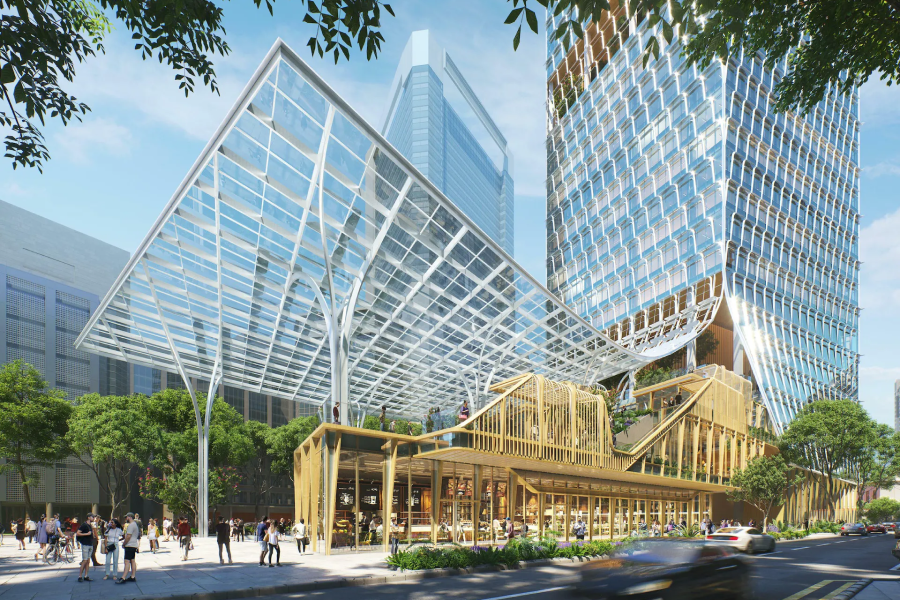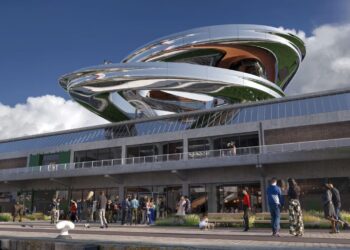In today’s world, sustainability is no longer a choice but a necessity. Corporations globally are shifting towards environmentally responsible practices, and Keppel South Central is no exception. This innovative development stands out as a prime example of how sustainability can be integrated into urban planning and commercial real estate. This article explores Keppel South Central’s sustainability efforts, what makes it unique, and why it serves as a benchmark for future developments.
Introduction to Keppel South Central
Keppel South Central is a modern commercial complex located strategically in Singapore’s Central Business District. Developed by Keppel Land, one of Asia’s leading property developers, the project combines state-of-the-art architectural design with cutting-edge sustainable technologies. Its purpose is to provide not just office spaces, but a green and healthy environment for its occupants.
The Importance of Sustainability in Urban Development
Sustainability in real estate involves building environments that minimize environmental impact while promoting social and economic benefits. Urban centers contribute significantly to global carbon emissions, resource consumption, and waste production. Sustainable urban developments like Keppel South Central focus on reducing these impacts by adopting green building standards, energy efficiency, and resource conservation.
Key Sustainability Features of Keppel South Central
Keppel South Central has implemented several innovative green features and technologies that contribute to its sustainable identity. Below are some of the main attributes:
A. Green Building Certifications
The development has achieved internationally recognized green certifications such as LEED Platinum and BCA Green Mark Platinum. These certifications validate that the building meets rigorous sustainability criteria including energy use, water efficiency, and indoor environmental quality.
B. Energy Efficiency Systems
Keppel South Central employs advanced energy management systems designed to minimize power consumption. This includes smart lighting controls, high-efficiency HVAC systems, and solar panels that generate renewable energy on-site.
C. Water Conservation Measures
Water efficiency is a critical focus, with the building utilizing rainwater harvesting systems, low-flow fittings, and water recycling techniques to reduce overall water usage.
D. Waste Reduction Programs
The development promotes waste segregation and recycling through dedicated facilities, encouraging tenants to participate in sustainable waste management.
E. Sustainable Materials and Construction
During construction, sustainable and recycled materials were prioritized to lower the carbon footprint. The design also focuses on durability to reduce maintenance-related waste.
F. Green Spaces and Biodiversity
Keppel South Central incorporates landscaped green areas and vertical gardens, enhancing urban biodiversity and providing natural cooling effects for occupants.
G. Healthy Indoor Environment
Using non-toxic paints, enhanced ventilation, and natural lighting, the building supports occupant health and wellbeing — an essential aspect of sustainability.
The Role of Technology in Enhancing Sustainability
One of the standout aspects of Keppel South Central is its integration of smart building technologies. These intelligent systems optimize resource use in real-time, reducing waste and energy consumption.
A. IoT Sensors and Data Analytics
Internet of Things (IoT) sensors monitor temperature, humidity, occupancy, and lighting to adjust settings dynamically, ensuring comfort while saving energy.
B. Building Management System (BMS)
The centralized BMS collects data from various sensors, enabling predictive maintenance and efficient operation of all building systems.
C. Renewable Energy Integration
Solar photovoltaic panels installed on the rooftop generate clean energy, which powers common areas and reduces dependence on the grid.
Benefits for Tenants and the Environment
Keppel South Central’s sustainability initiatives yield numerous benefits:
A. Lower Operating Costs
Energy-efficient technologies reduce utility bills, making tenancy more affordable.
B. Improved Comfort and Health
Better air quality, lighting, and acoustics increase occupant productivity and satisfaction.
C. Corporate Social Responsibility (CSR)
Tenants benefit from enhanced brand reputation by associating with a green building, appealing to environmentally conscious clients and employees.
D. Reduced Environmental Footprint
Lower greenhouse gas emissions and resource consumption help combat climate change and preserve natural resources.
Challenges in Implementing Sustainability
Despite its successes, achieving such sustainability levels involves overcoming challenges:
A. High Initial Investment
Green technologies and materials often require higher upfront costs.
B. Balancing Design and Functionality
Integrating sustainability must not compromise the building’s aesthetic or operational needs.
C. Tenant Engagement
Sustainability requires active participation from occupants, which can be difficult to maintain.
Keppel South Central’s Vision for the Future
Keppel Land envisions Keppel South Central as a pioneer in sustainable urban development that inspires future projects. The company continuously invests in research and innovation to enhance green building technologies. Plans include further integration of renewable energy sources, smarter waste management solutions, and expanded green spaces.
Why Keppel South Central Matters Globally
As cities around the world grapple with environmental challenges, Keppel South Central offers a scalable model for sustainability. Its holistic approach—covering energy, water, materials, health, and technology—demonstrates how buildings can significantly reduce environmental impact while offering commercial value.
How Other Developers Can Learn from Keppel South Central
Other developers seeking to adopt sustainable practices can draw important lessons from Keppel South Central:
A. Set Ambitious Sustainability Goals
Aim for top-tier green certifications early in the design phase.
B. Invest in Smart Technologies
Leverage IoT and automation for efficient resource management.
C. Engage Tenants Actively
Implement educational programs and incentives to encourage sustainable behaviors.
D. Focus on Long-Term Value
Consider life-cycle costs and benefits, not just initial investment.
Conclusion
Keppel South Central exemplifies how commercial real estate can harmonize with nature through innovative design and technology. It reflects the urgent need for sustainable urban solutions that address environmental, social, and economic dimensions. As the world moves towards greener futures, developments like Keppel South Central set a compelling standard for others to follow.









